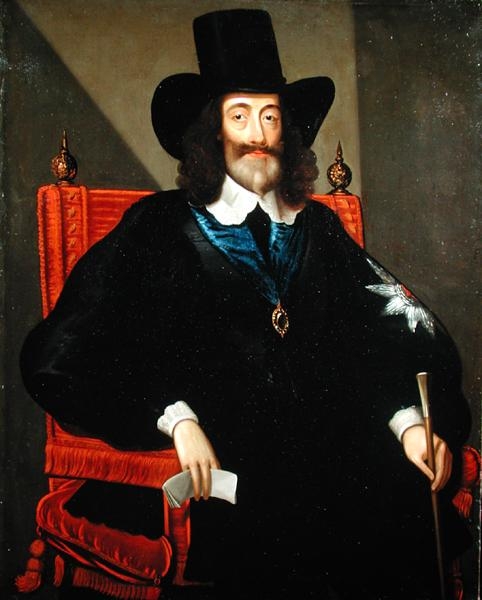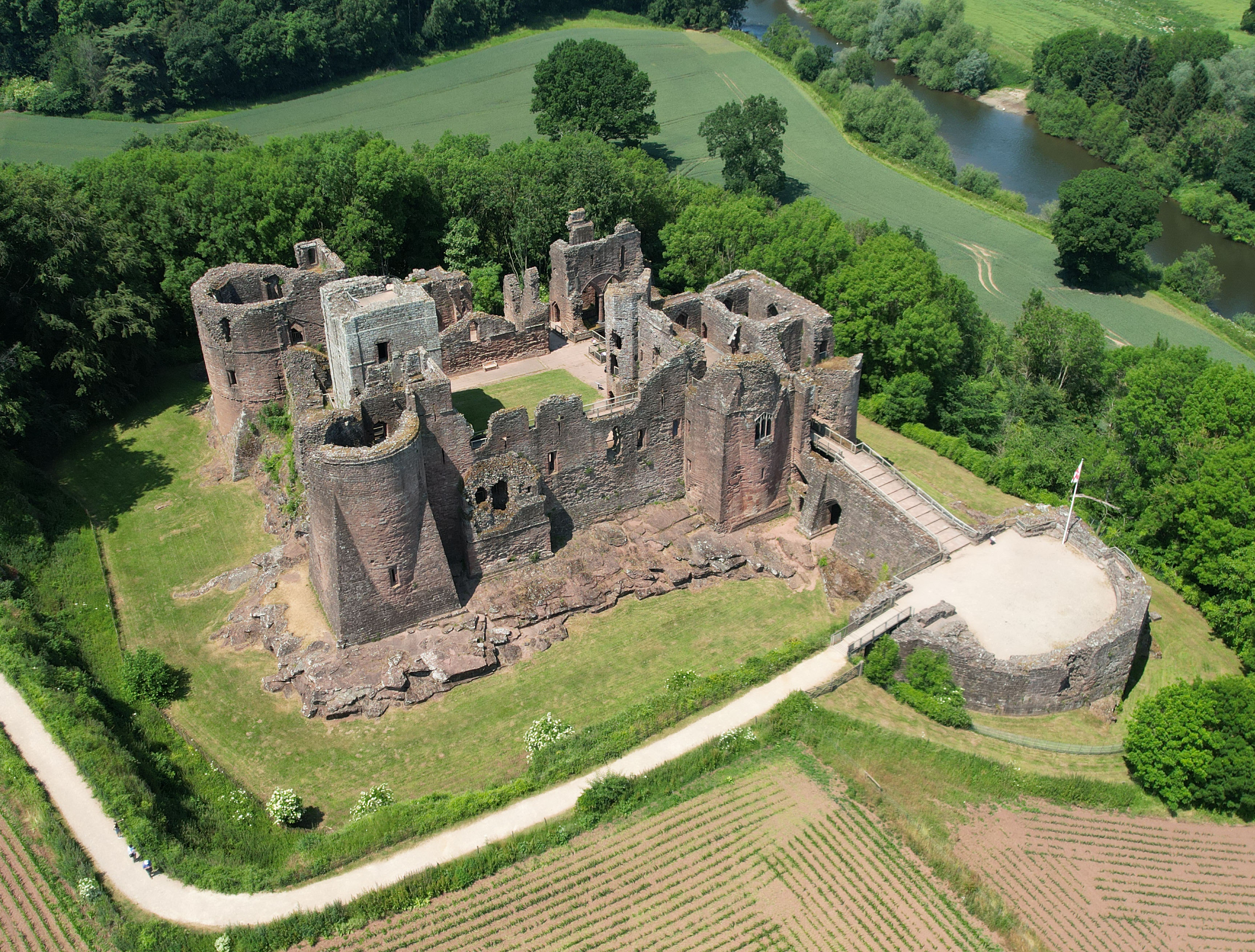|
John Birch (soldier)
Colonel John Birch (7 September 161510 May 1691) was a soldier and politician from Manchester in England. He fought for the Roundheads, Parliamentarians in the First English Civil War, and was a Member of Parliament at various times between 1646 and 1691. Considered a moderate, he was excluded from Parliament in Pride's Purge of December 1648, and prevented from taking his seat for Leominster (UK Parliament constituency), Leominster under the Protectorate. After the 1660 Stuart Restoration, he was restored to favour and sat on over 122 Parliamentary Committees. During the 1679 Exclusion Crisis, he supported barring the Catholic James II of England, James II from the throne, and subsequently backed the 1689 Glorious Revolution. A contemporary Gilbert Burnet later described him as "...the roughest and boldest speaker in the House, [with the language and phrases of a carrier...he spoke always with much life and heat, but judgment was not his talent." Personal details John Birch wa ... [...More Info...] [...Related Items...] OR: [Wikipedia] [Google] [Baidu] |
Siege Of Plymouth
The siege of Plymouth took place during the First English Civil War, when Royalist forces besieged Plymouth, in Devon, held by a Parliamentary garrison. With the exception of a brief interlude in July 1644, the town was isolated for most of the period from August 1642 to January 1646; however, control of the sea meant the garrison could easily be resupplied. The Royalists recognised this made its capture extremely difficult, and they generally restricted operations to a land blockade. However, there were two serious attempts to capture the town; the first, from October to December 1643, the second, January to February 1645. The town was finally relieved in February 1646. Background When the war began in August 1642, Parliamentary forces secured most of southern and western England, including the ports of Plymouth and Exeter, and the bulk of the Royal Navy. This prevented Royalist efforts to import arms and men from Europe. Shortly after the war began in August 1642, Plymouth ... [...More Info...] [...Related Items...] OR: [Wikipedia] [Google] [Baidu] |
Exclusion Crisis
The Exclusion Crisis ran from 1679 until 1681 in the reign of King Charles II of England, Scotland and Ireland. Three Exclusion Bills sought to exclude the King's brother and heir presumptive, James, Duke of York, from the thrones of England, Scotland and Ireland because he was a Roman Catholic. None became law. Two new parties formed. The Tories were opposed to this exclusion, while the "Country Party", who were soon to be called the Whigs, supported it. While the matter of James's exclusion was not decided in Parliament during Charles's reign, it would come to a head only three years after James took the throne, when he was deposed in the Glorious Revolution of 1688. Finally, the Act of Settlement 1701 decided definitively that Roman Catholics were to be excluded from the English, Scottish, and Irish thrones, later the British throne. Background In 1673, when the Duke of York refused to take the oath prescribed by the new Test Act, it became publicly known that he was a ... [...More Info...] [...Related Items...] OR: [Wikipedia] [Google] [Baidu] |
Stuart Restoration
The Stuart Restoration was the reinstatement in May 1660 of the Stuart monarchy in Kingdom of England, England, Kingdom of Scotland, Scotland, and Kingdom of Ireland, Ireland. It replaced the Commonwealth of England, established in January 1649 after the execution of Charles I, with his son Charles II of England, Charles II. The Commonwealth of England had been governed by Lord Protector Oliver Cromwell and then his son Richard Cromwell. The term is also used to describe the reign of Charles II (1660–1685), and sometimes that of his younger brother King James II, James II (1685–1688). The Protectorate After Richard Cromwell, Lord Protector from 1658 to 1659, ceded power to the Rump Parliament, Charles Fleetwood and John Lambert (general), John Lambert then dominated government for a year. On 20 October 1659, George Monck, the governor of Scotland under the Cromwells, marched south with his army from Scotland to oppose Fleetwood and Lambert. Lambert's a ... [...More Info...] [...Related Items...] OR: [Wikipedia] [Google] [Baidu] |
Protectorate
A protectorate, in the context of international relations, is a State (polity), state that is under protection by another state for defence against aggression and other violations of law. It is a dependent territory that enjoys autonomy over most of its internal affairs, while still recognizing the suzerainty of a more powerful sovereign state without being a possession. In exchange, the protectorate usually accepts specified obligations depending on the terms of their arrangement. Usually protectorates are established de jure by a treaty. Under certain conditions—as with History of Egypt under the British#Veiled Protectorate (1882–1913), Egypt under British rule (1882–1914)—a state can also be labelled as a de facto protectorate or a veiled protectorate. A protectorate is different from a colony as it has local rulers, is not directly possessed, and rarely experiences colonization by the suzerain state. A state that is under the protection of another state while retai ... [...More Info...] [...Related Items...] OR: [Wikipedia] [Google] [Baidu] |
Pride's Purge
Pride's Purge is the name commonly given to an event that took place on 6 December 1648, when soldiers prevented members of Parliament considered hostile to the New Model Army from entering the House of Commons of England. Despite defeat in the First English Civil War, Charles I of England, Charles I retained significant political power. This allowed him to create an alliance with Scots Covenanters and Roundhead, Parliamentarian moderates to restore him to the English throne. The result was the 1648 Second English Civil War, in which he was defeated once again. Convinced only his removal could end the conflict, senior commanders of the New Model Army took control of London on 5 December. The next day, soldiers commanded by Colonel Thomas Pride forcibly excluded from the Long Parliament those MPs viewed as their opponents, and arrested 45. The purge cleared the way for the Execution of Charles I, execution of Charles in January 1649, and establishment of the The Protectorate, Pro ... [...More Info...] [...Related Items...] OR: [Wikipedia] [Google] [Baidu] |
Roundheads
Roundheads were the supporters of the Parliament of England during the English Civil War (1642–1651). Also known as Parliamentarians, they fought against King Charles I of England and his supporters, known as the Cavaliers or Royalists, who claimed rule by absolute monarchy and the principle of the divine right of kings. The goal of the Roundheads was to give to Parliament the supreme control over executive administration of England. Beliefs Most Roundheads sought constitutional monarchy in place of the absolute monarchy sought by Charles; however, at the end of the English Civil War in 1649, public antipathy towards the king was high enough to allow republican leaders such as Oliver Cromwell to abolish the monarchy completely and establish the Commonwealth of England. The Roundhead commander-in-chief of the first Civil War, Thomas Fairfax, remained a supporter of constitutional monarchy, as did many other Roundhead leaders such as Edward Montagu, 2nd Earl of Mancheste ... [...More Info...] [...Related Items...] OR: [Wikipedia] [Google] [Baidu] |
England
England is a Countries of the United Kingdom, country that is part of the United Kingdom. It is located on the island of Great Britain, of which it covers about 62%, and List of islands of England, more than 100 smaller adjacent islands. It shares Anglo-Scottish border, a land border with Scotland to the north and England–Wales border, another land border with Wales to the west, and is otherwise surrounded by the North Sea to the east, the English Channel to the south, the Celtic Sea to the south-west, and the Irish Sea to the west. Continental Europe lies to the south-east, and Ireland to the west. At the 2021 United Kingdom census, 2021 census, the population was 56,490,048. London is both List of urban areas in the United Kingdom, the largest city and the Capital city, capital. The area now called England was first inhabited by modern humans during the Upper Paleolithic. It takes its name from the Angles (tribe), Angles, a Germanic peoples, Germanic tribe who settled du ... [...More Info...] [...Related Items...] OR: [Wikipedia] [Google] [Baidu] |
Thomas Birch (English Parliamentarian)
Thomas Birch, 5 June 1608 to 5 August 1678, was an English landowner, soldier and radical Puritan who fought for Parliament in the Wars of the Three Kingdoms, and sat in the House of Commons at various times between 1649 and 1658. Part of a large Puritan family, many of whom also served in the Parliamentarian army, Birch helped secure Lancashire for Parliament during the First English Civil War. He was appointed Deputy Lieutenant of Lancashire in 1642 and Governor of Liverpool in 1644. Unlike many of his colleagues, who were moderate Presbyterians, Birch was associated with the religious Independents who included Oliver Cromwell. As a result, when the Commonwealth of England was established after the Execution of Charles I in January 1649, Birch became the leading political figure in Lancashire. However, he gradually came to oppose Cromwell, and was removed as Governor in 1655, as well as being excluded from the Second Protectorate Parliament. Following the 1660 Stuart Resto ... [...More Info...] [...Related Items...] OR: [Wikipedia] [Google] [Baidu] |
Goodrich Castle
Goodrich Castle is a Norman medieval castle ruin north of the village of Goodrich in Herefordshire, England, controlling a key location between Monmouth and Ross-on-Wye. It was praised by William Wordsworth as the "noblest ruin in Herefordshire"Hull and Whitehorne, p. 37. and is considered by historian Adrian Pettifer to be the "most splendid in the county, and one of the best examples of English military architecture".Pettifer, p. 96. Goodrich Castle was probably built by Godric of Mappestone after the Norman Conquest of England, initially as an earth and wooden fortification. In the middle of the 12th century the original castle was replaced with a stone keep, and was then expanded significantly during the late 13th century into a concentric structure combining luxurious living quarters with extensive defences. The success of Goodrich's design influenced many other constructions across England over the following years. It became the seat of the powerful Talbot family befo ... [...More Info...] [...Related Items...] OR: [Wikipedia] [Google] [Baidu] |
Battle Of Stow-on-the-Wold
The Battle of Stow-on-the-Wold (21 March 1646) took place near Stow-on-the-Wold in Gloucestershire during the First English Civil War. It was a Parliamentarian victory by detachments of the New Model Army over the last Royalist field army. In the spring of 1646, King Charles I of England was getting ever more desperate to hold the Royalist cause together whilst waiting for the long promised relief forces from Ireland, Scotland and France. Sir Jacob Astley took command of the Royalist forces in the west and began to gather up the remnants from the handful of Royalist garrisons still left in the West Midlands to create a new field army. At this point in the war, Royalist morale was low. However, Astley, a stalwart of the Royalist commanders and an experienced soldier, was able to cobble together a force of 3,000. While returning to Oxford he was intercepted and defeated at Stow-on-the-Wold. Prelude The year of 1646 began badly for Charles I. On no side was there the smallest ... [...More Info...] [...Related Items...] OR: [Wikipedia] [Google] [Baidu] |







